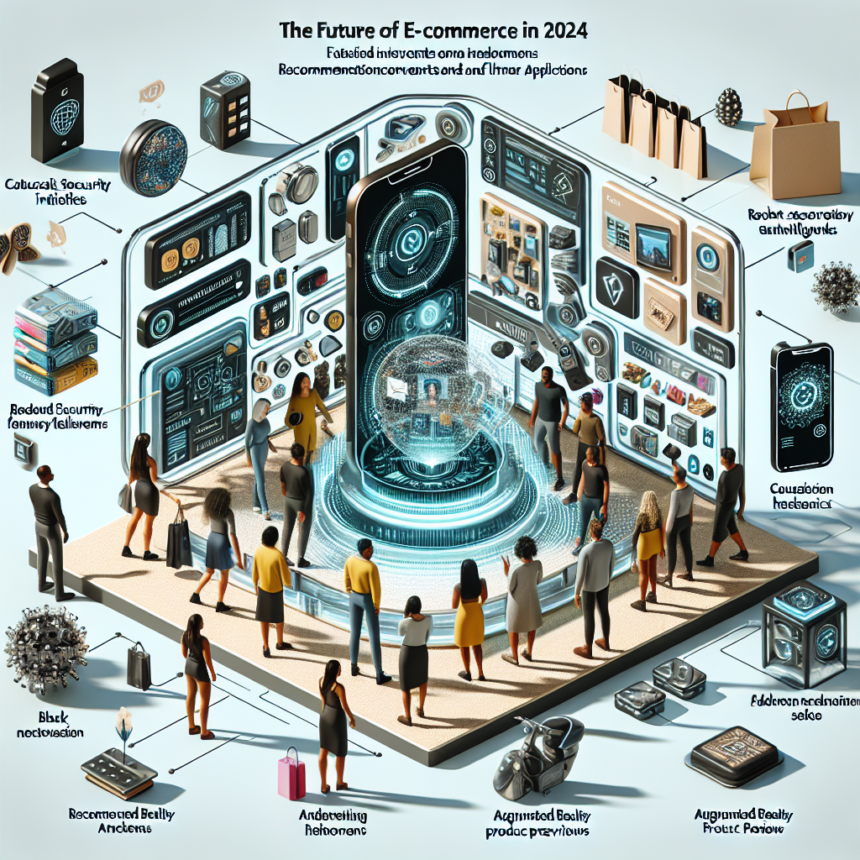As we step into 2024, the e-commerce landscape is evolving at an unprecedented pace. The shift from traditional brick-and-mortar stores to online shopping has been accelerated by global events and changing consumer expectations. Businesses are compelled to adapt to these new realities or risk falling behind. In this article, we explore the key trends shaping the future of online shopping in 2024.
1. Enhanced Personalization
The rise of big data and artificial intelligence has made it easier for e-commerce platforms to offer personalized shopping experiences. In 2024, we can expect enhanced personalization through every stage of the buyer’s journey. Algorithms will analyze consumer behavior, preferences, and purchase history to recommend products tailored to individual needs.
For instance, advanced recommendation engines will not only show related items but will also curate entire shopping experiences based on user profiles. This level of personalization not only elevates the customer’s online shopping experience but also drives conversion rates. Businesses looking to thrive in 2024 must invest in these AI-driven solutions to stay ahead.
2. Rise of Social Commerce
Social media is no longer just a platform for interactions; it has evolved into a powerful sales channel. In 2024, social commerce will continue its upward trajectory, with platforms such as Instagram, Facebook, and TikTok integrating more direct shopping features. Brands will leverage influencer partnerships to reach wider audiences, capitalizing on the authenticity associated with influencers.
Expect shoppable posts, live shopping events, and interactive advertisements to become the norm. This trend encourages impulse buying and cultivates community engagement, making it an essential strategy for e-commerce success.
3. Sustainability and Ethical Shopping
Modern consumers are increasingly conscious of their purchasing decisions and the impact they have on the environment. In 2024, sustainability will play a central role in e-commerce. Brands that prioritize eco-friendly practices, transparent supply chains, and ethical sourcing will resonate more with consumers.
E-commerce companies will adopt more sustainable packaging, reduce carbon footprints in delivery, and offer options for recycling or reselling products. Transparent storytelling about a brand’s sustainability efforts will not only attract eco-conscious consumers but also foster customer loyalty.
4. Augmented Reality (AR) and Virtual Reality (VR)
The integration of Augmented Reality (AR) and Virtual Reality (VR) is set to revolutionize the e-commerce experience. In 2024, consumers will be able to virtually try on clothes, see how furniture fits in their space, or even attend virtual showrooms. This technology provides a more immersive shopping experience, helping customers make informed decisions.
With AR and VR technologies becoming more accessible, brands will invest in these capabilities to enhance customer interactions, reduce return rates, and create unique experiences that set them apart from the competition.
5. Voice Commerce and Conversational AI
Voice-activated shopping is gaining traction, as consumers increasingly turn to voice assistants like Amazon’s Alexa, Google Assistant, and Apple’s Siri. By 2024, we expect significant growth in voice commerce, fueled by the convenience of hands-free shopping.
Conversational AI will enhance customer support, enabling businesses to better understand and meet customer needs. This technology allows for real-time, personalized interactions, making shopping more efficient and enjoyable.
6. Subscription-Based Models
The subscription economy continues to thrive, and 2024 will see an increased adoption of subscription-based models across various industries. This model provides customers with convenience and curated shopping experiences, allowing brands to foster long-term relationships with consumers.
From monthly beauty boxes to food delivery services, businesses that optimize their subscription offerings will secure a loyal customer base. This trend underscores the importance of customer retention strategies in the competitive online marketplace.
7. Payment Innovations
The evolution of payment methods is critical in the landscape of e-commerce. In 2024, we will see a broader acceptance of digital currencies, mobile wallets, and Buy Now, Pay Later (BNPL) options. These payment methods offer flexibility and convenience, making purchases easier for consumers.
Additionally, biometric payments—those utilizing fingerprint or facial recognition—could become more mainstream, enhancing security while simplifying transaction processes.
Conclusion
The future of e-commerce in 2024 is set to be driven by technology and changing consumer expectations. With trends like enhanced personalization, social commerce, sustainability, AR/VR, voice commerce, subscription models, and payment innovations, businesses must adopt agile strategies to navigate this evolving landscape. Companies that remain adaptable and embrace these shifts will thrive in the competitive online shopping arena.
FAQs
Q1: What is the importance of personalization in e-commerce?
A1: Personalization enhances the shopping experience by offering tailored recommendations based on individual preferences, leading to higher conversion rates and customer satisfaction.
Q2: How can businesses implement social commerce effectively?
A2: Brands can engage influencers, create shoppable content, and host live shopping events to foster community interaction and encourage purchases directly through social media platforms.
Q3: Why is sustainability important for e-commerce brands?
A3: Consumers increasingly prefer brands that prioritize sustainable practices. Embracing sustainability can enhance brand loyalty and appeal to eco-conscious buyers.
Q4: What technologies are crucial for the e-commerce environment in 2024?
A4: Key technologies include Augmented Reality (AR), Virtual Reality (VR), Artificial Intelligence (AI), and voice commerce, all of which enhance customer interactions and streamline shopping processes.
Q5: Are payment innovations changing consumer behavior?
A5: Yes, innovations like digital currencies, mobile wallets, and BNPL options are creating more convenient purchasing experiences, encouraging more consumers to shop online.
